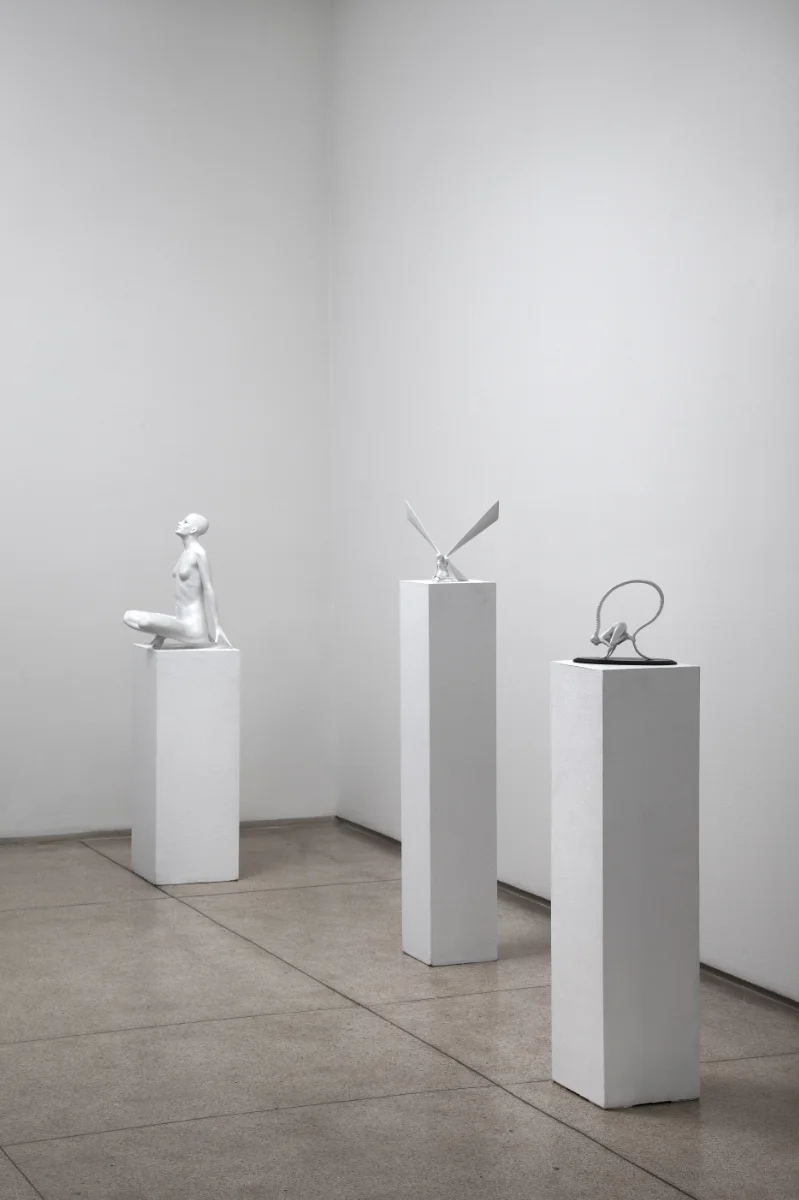AS IT IS
David Moješčík has created an extensive collection of sculptures. Today, he is part of a middle-aged generation of Czech sculptors and is famous for his creations in several public spaces in Ostrava that became a focus of anger from the public and controversy amongst experts… Moješčík is one of the few contemporary sculptors who does not have a connection to academia and is therefore not supported by academic institutions. In this difficult time, when art is usually supported by money from grants, it’s almost impossible to get assistance without the help of the institutions. Instead, Moješčík chose his own path and so, like a romantic adventurer, he still doing only that which he is best at: figure sculpting.
Moješčík´s sculptures have two main influences, separated by place and by time, they are: East Buddhist spiritualism and the romanticizing simulacrum of the former bourgeois fin de sieçle cultures. His work frequently mixes real life with fairytale worlds, as is often seen in contemporary literature and fantasy video games. In the 80s, art historian and essayist, Josef Kroutvor, compares similar events in a river delta [1] where various formal ideas, their shapes and powers, are mixed until they disappear, then they reappear back from depths and fall back to oblivion or appear in sub-rivers or a blind arm… etc. It’s generally true, that ideas can be buried in order to choose the correct one later. I remember when Moješčík studied at the Faculty of Fine Arts, at the Brno University of Technology, his unusual but sophisticated figures were particularly interesting; If I understood correctly, his work was not just about the realistic study of a model, but about capturing some ideal model: a “body created from bodies” with parts of models used to create one perfect model. At that time, Moješčík‘s sculptures had unusual poses, with their final appearance fitting perfectly into the scene as a whole, in the norms of classic sculpting and ideal composition of inner and outer (until recently only young women) “naked” beauty.
Moješčík´s nude figures are, from a modelling point of view, perfect. Perhaps because of that, they can appear a little unnatural to the viewer. However, they certainly are expressive, like they were sent to us from another world! The impression of internal intervention accompanies the sense of a non-violent, yet powerfully expansive moment, like after a deep exhaled breath, a sudden inhale must occur!
The best example of this is Moješčík´s Levitation sculpture, where a woman is in a meditating yoga pose, and is somehow, by the way, balancing only on three points: a little toe and one finger in each hand. As a result of the formal base and centre of gravity being lifted up, the model must be supported by a mesh composed of energetically living contour lines of the figure, as if it’s rotating through the sculpture from inside out and also around the centre. Very interesting and with a feeling of being in motion is, for now, the latest of Moješčík’s figures: a life-size man with his upper body overlapping his centre of gravity as he reaches expressively above a cross created by his legs, centralised on the sex organ. After so many years creating figures of women, this latest creation is a man: the non-dual God, Ishvara (2019-2020), portrayed in a difficult yoga pose [2]. Ishvara, in Hindu philosophy, is monastically presented as a self-centred, independent confession-less eternal God, Supreme Lord of the World… etc.
Pavel Netopil
Notifications – Literature:
1. Kroutvor, Josef. Hlava Medusy. Jazzpetit č. 29, s. 143-144.
2. Father, Ing. Miloslav Moješčík (1947-2009) was yoga instructor (Yoga in daily
life), with worldwide certificate

